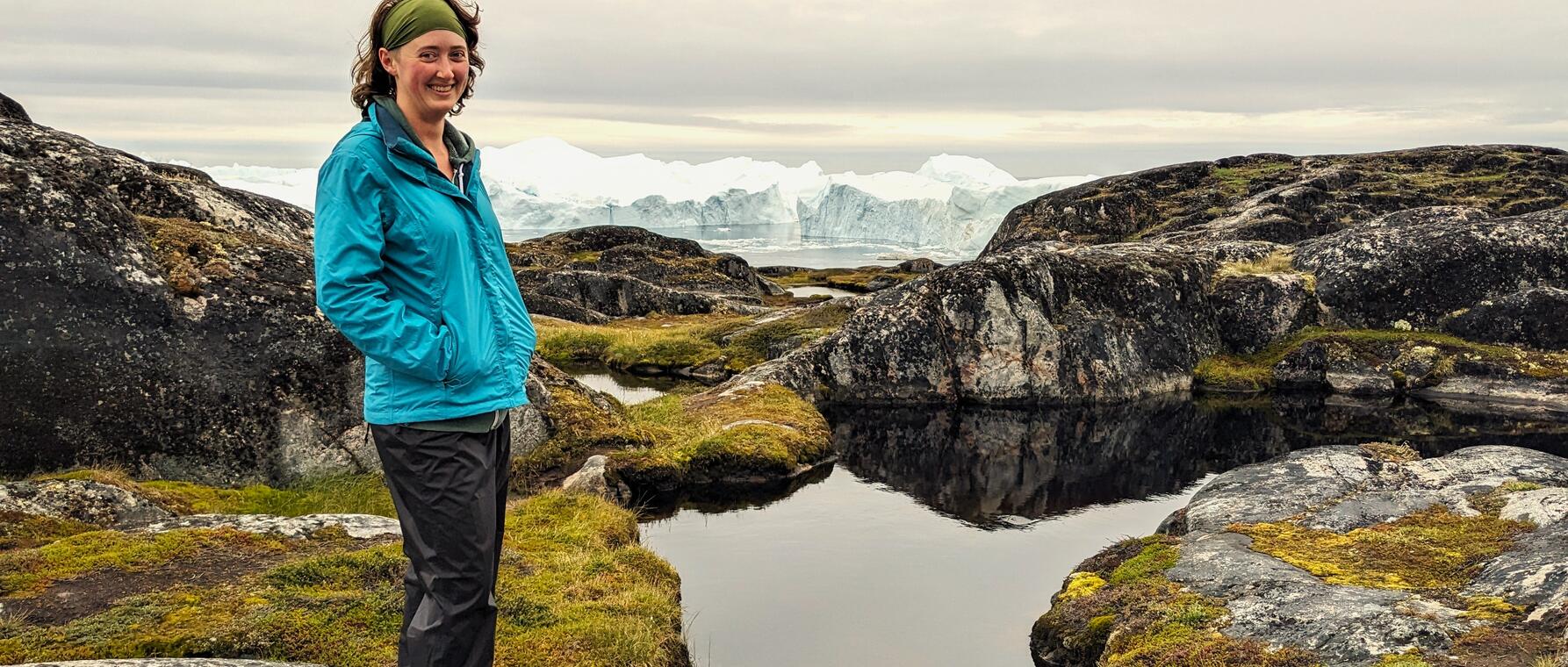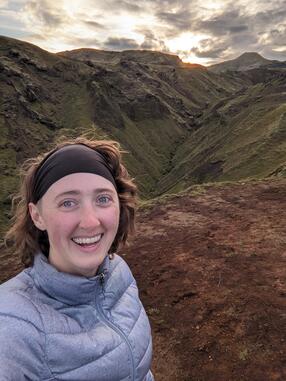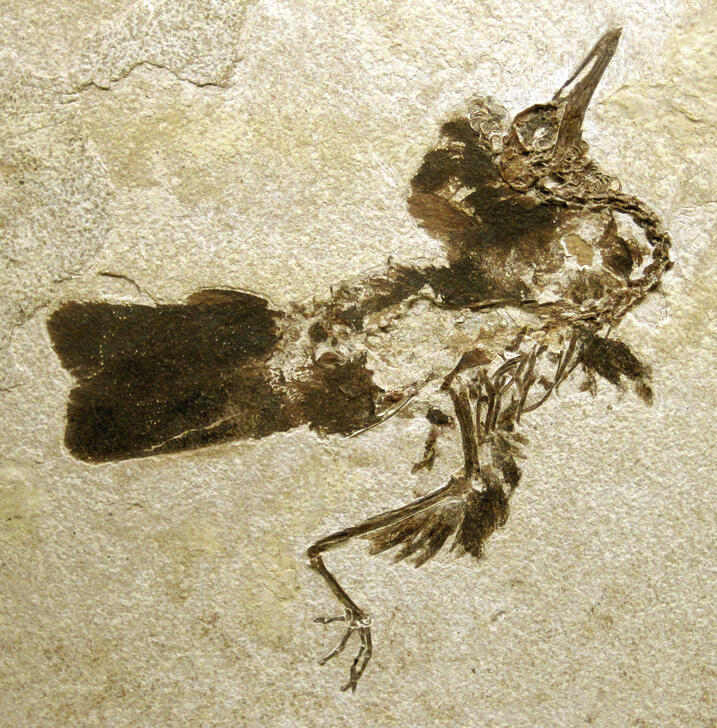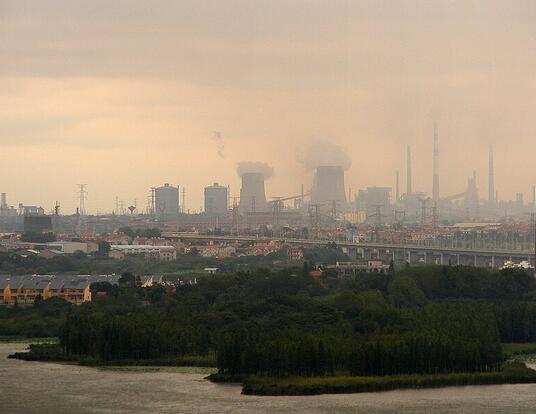Cold Facts about Global Warming
How the study of cold snaps could make the effects of climate change more predictable

Research at Risk: Since World War II, universities have worked with the federal government to create an innovation ecosystem that has yielded life-changing progress. Now much of that work may be halted as funding is withdrawn. Find out more about the threats to medical, engineering, and scientific research, as well as how Harvard is fighting to preserve this work—and the University's core values.
How do you forecast the future of the Earth’s climate? It’s a question that becomes increasingly important as the planet warms and weather patterns become more extreme—from the record-breaking heat waves of the summer of 2023 to more frequent and severe storms, droughts, floods, and many other devastating events.
Because the climate is entering a state that scientists have never before been able to observe, predicting the impact of global warming is more challenging than ever. Should climatologists rely on complex computer simulations to forecast the impact on weather patterns in the future? Or should they look to geological history to see what the weather was actually like in the distant past when the planet was much warmer?
“Both,” says Kara Hartig. As a PhD student at the Harvard Kenneth C. Griffin Graduate School of Arts and Sciences (Harvard Griffin GSAS), Hartig applies physics to the study of the Earth’s climate. Leveraging both computer models and data gleaned from the fossil record, she studies outbreaks of frigid air over North America––often referred to as a break in the “polar vortex”—to better understand these phenomena, their dependence on larger weather patterns, and the possibilities for the future of climate change.
A Global Simulation

In her PhD thesis project, Hartig examines how cold air masses over the US Midwest behave and how they come to be. “Is it just a matter of taking air that was already cold out of somewhere that’s colder than here and bringing it into North America,” she asks, “or are there things that change the temperature of the air as it travels?” By answering these questions, Hartig hopes to help predict how cold air masses may behave in the future as they pass through regions warmed by climate change.
Much of Hartig’s work involves using a complex climate simulation that runs on supercomputers located at Harvard and in Colorado. The simulation brings together models of many smaller-scale factors—both on their own and in response to one another—to try to account for the way elements of the climate might change over time.
“One input into your model might be how much heat and water make their way off of the ocean surface and into the atmosphere,” Hartig says. “But another might be how much heat makes it back to the land surface from the atmosphere due to the increased concentration of CO2. Those components are both evolving on their own and interacting with each other.”
Using the computer models, Hartig can get a picture of what might happen to the surface of the land underneath a mass of frigid air, or how clouds forming within or above the air masses might influence temperature. That allows her to simulate the movements of cold air masses, tracking their paths backward through time to better understand how they behave—and how they might shape weather patterns in the future.
“Let’s say we identify a feature that turns out to be really important to these cold air outbreaks––for example, the amount of heat coming into the atmosphere off of the Earth’s surface, whether that’s land or ocean,” she explains. “In the future, we’re likely to lose a whole lot of Arctic sea ice and expose the ocean. That will send a lot more heat into the atmosphere. Just off that single mechanism, you might be able to make a prediction for what’s going to happen with cold air outbreaks.” Knowing and identifying the warning signs for changes caused by the movement of air masses can help countries prepare for the extreme environmental events to come.
In the future, we’re likely to lose a whole lot of Arctic sea ice and expose the ocean. That will send a lot more heat into the atmosphere. Just off that single mechanism, you might be able to make a prediction for what’s going to happen with cold air outbreaks.
—Kara Hartig
The Past Is Present
In addition to computer simulations, Hartig draws on geologic data to help make predictions about a warming world. Of course, finding information on what the Earth’s climate was like 50 million years ago is a challenge in itself. It’s not as if there are air samples from the Eocene Epoch lying around in a lab somewhere. Luckily, the fields of biology and paleontology can give climate scientists useful evidence.
“Often, living things are sensitive to conditions like temperature,” Hartig says. “When they die and are fossilized, they preserve in the rocks some of that information about what the climate was like.”
That fossil record can provide evidence that the environment had particular conditions that allowed those species to survive. Hartig cites the Green River region of Wyoming, where winter temperatures typically fall well below freezing in today’s climate. According to fossil evidence, though, crocodiles, palm trees, and some species of large tropical turtles all occupied the landscape there during the warmer climate period of the Eocene. “Those reptiles cannot survive below-freezing temperatures for more than a few hours at a time,” Hartig says. “That gives us a hard biological limit on the absolute coldest temperatures that could have been present because we know that these species were there for millions, maybe even tens of millions of years continuously.”

Existing computer models of Eocene climate conditions have consistently produced simulated scenarios with cold air outbreaks over Wyoming, even though fossil evidence demonstrates that those conditions could not have existed there at that time. This means that there are mechanisms at play for which the models have not accounted––and which climate scientists do not yet fully understand.
That’s where Hartig’s research comes in. Using information from the fossil record, she is developing an improved theoretical understanding of which climate factors are the most important influences on temperature around Green River, Wyoming, accounting for what the past tells us about Eocene temperature conditions there.
“For example, plants are most responsive to the average wintertime temperature, so I know that my climate simulation should produce a particular average temperature in regions with certain species of plants if I want it to be a good match to the Eocene,” she says. “But there are lots of ways to produce the same average: you could have a very narrow distribution, or one with long tails to both warm and cold temperatures, or a very skewed distribution that may be bunched up around the average but with a very long tail into cold extremes. So, I need another constraint on the minimum winter temperature, which is where reptiles come in. Turtles and crocodiles can't survive more than about a day below freezing, so if you find a significant number of reptiles over a large area, then you know the absolute minimum temperature allowable there is right around freezing.”
After adapting the computer model of the Eocene using the constraints from Green River fossils, Hartig can run her simulation for a long time to generate data representing hundreds of Midwestern cold snaps. By looking at the variations in a particular parameter across all of these cold snaps, such as cloud formation patterns or interactions between air masses, she can generate data about how a cold air mass moves and evolves over a simulated span of time. Analyzing this kind of data leads her to a more thorough understanding of the fundamental physical mechanisms behind how cold air masses behave––and these theoretical principles can then be applied to better models of the Earth’s climate future.
Simulations of the Eocene cannot simply be reused to predict conditions in the impending future. Too much has changed since then. The Earth’s continents have shifted their locations over the past 50 million years, for example, and the composition of the planet’s atmosphere and biosphere is also quite different today. But Hartig combines her broader theoretical findings about cold air outbreaks––based on Eocene evidence––with models that are built for projecting the future. “The climate that we’re emulating,” she explains, “is not necessarily a near future climate. It’s more like in the year 2300 if we continue to emit greenhouse gases at a very high rate.” By improving how this future period is computationally modeled, Hartig produces simulations that give better predictions of how the Earth’s climate will develop in years to come––and of how life on our planet may be impacted.
Interdisciplinary Interests
Hartig was led to study the Earth’s climate by a passion for an interdisciplinary approach to science. Her research today employs a “physics- and math-based analysis,” but at times also incorporates biology and ecology—for instance, in trying to understand fossil records. “I have to know something about how different types of animals and plants react to temperature,” she explains. “I have to know something about how the ocean functions, and the atmosphere, and how ice as a material is able to transmit energy, which is more of an engineering question. I get to do a little bit of everything, which has always been something I liked about science.”
This way of using a broad set of methods to answer questions also drew her to Harvard Griffin GSAS. “The subfield of physics that I wanted to do is called soft matter, which is often not done in a physics department because it’s commonly categorized as an engineering topic,” Hartig says. “But there are a ton of people who do soft matter here at Harvard, and it’s really easy to do interdisciplinary projects with faculty outside of your own department.” Hartig’s research has ultimately led her to work with faculty and graduate students both in her home department, physics and in other departments including Earth and planetary sciences and applied mathematics.
I have an interest in the details of climate science but don’t always get a chance to look ‘under the hood’ at what goes into climate modeling. So, looking at Kara’s work gave me an opportunity to see a lot of the details of research into a particular topic.
—Professor John Huth
John Huth, Donner Professor of Science in Harvard’s Department of Physics and the chair of Hartig’s thesis committee, says that cross-disciplinary projects like hers are exciting for faculty to support. “I have an interest in the details of climate science but don’t always get a chance to look ‘under the hood’ at what goes into climate modeling,” he says. “So, looking at Kara’s work gave me an opportunity to see a lot of the details of research into a particular topic. What is a bit surprising is that I not only could get to understand it but also ask what turned out to be sensible questions.”
Hartig also says she found the environment within the physics department especially welcoming. “Beginning with my visit as an admitted student, I could tell that the community was strong here. Students were really positive about it. I felt very supported.” Hartig has also found valuable support networks through participation in affinity groups for women and gender minorities in physics and the geosciences, both at Harvard and in academic professional organizations.
After finishing her PhD, Hartig hopes to continue working in climate science research. “One of my favorite things about being a climate scientist,” she says, “is that people are just curious about it. We all have some personal experience of climate.”

While she clearly has a passion for science, Hartig is also committed to addressing a problem that impacts all living things on Earth—a calling she believes is both a blessing and a tragedy. She’s hopeful that the benefits of the former will win out over the dangers of the latter.
“It's a blessing because there is funding and interest and the chance to work on fundamental science that is also socially relevant,” she says. “But it’s also a tragedy because the reason for the funding and the interest and the social relevance is an impending global environmental and humanitarian crisis. I wish it wasn't so urgent that we understand the implications of climate change for extreme weather events, but the more we do understand, the better we can prepare.”
This research was funded by the National Science Foundation and the National Defense Science and Engineering Graduate Fellowship.
Get the Latest Updates
Join Our Newsletter
Subscribe to Colloquy Podcast
Simplecast





